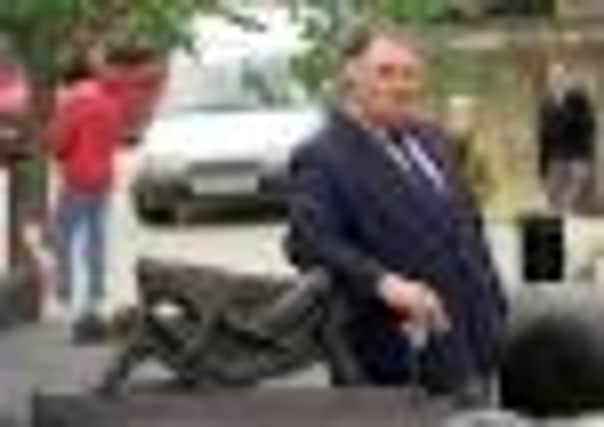Paolozzi prize ‘to inspire new art generation’


Now, nearly seven years after his death, Leith-born Sir Eduardo Paolozzi is set to inspire a whole new generation of young artists.
An art prize has been created in his honour in the hope it will help propel the careers of the city’s artistic hopefuls.
Advertisement
Hide AdAdvertisement
Hide AdPaolozzi’s sister, Yolanda Tartaglia, who helped launch the initiative at the City Art Centre in Edinburgh yesterday, said her brother would have “loved” the idea of helping young artists get their career off the ground.
The artist widely credited with founding the “Pop Art” movement in the 1950s, who attended Leith Walk Primary and Holy Cross Academy in Edinburgh, was famously inspired by the packaging and advertising he found in his parents’ shop.
Edinburgh city council has instigated the competition, to be judged by a panel drawn from the city’s arts community. It will be open to fifth- and sixth-year pupils studying art and design.
Teachers from every state school in the city will be urged to nominate contenders in three different categories, with the overall winner expected to be drawn from the three “finalists”.
It is hoped art colleges across Scotland will recognise the Paolozzi Prize as a new badge of excellence and that it will make the same impact as the Dewar Arts Awards – set up in memory of Donald Dewar, the late First Minister – over the past decade.
Dozens of contenders are expected at the inuagural ceremony in June, with the overall winner scooping a £500 cash prize.
Councillors claim the status attached to winning a prize set up in the artist’s honour will be of much more benefit in the long-term.
Advertisement
Hide AdAdvertisement
Hide AdEducation leader Marilyne MacLaren said: “It is difficult enough for young people to get on with a career at the moment.
“Our aim is for this to become a prestigious prize and for it to become widely recognised within the city and by Scotland’s various art colleges as a real signifier of talent.
“Sir Eduardo himself was very much a radical thinker and our challenge to art and design students is to be imaginative, creative and think outside the box.”
Ms Tartaglia, 81, who lives in the Sighthill area of the city, said: “I’m very proud and it’s a great honour for Eduardo to be recognised in this way. I hope there will be interest from all kinds of young artists as there were so many aspects to his work – it wasn’t just about sculpture or tapestry or design. He was inspired by all kinds of different things.
“A lot of his work was meant to be enjoyed by children, particularly big sculptures like the giant foot at the top of Leith Walk.”
Plans for the prize were first discussed by the council months after the artist’s death in 2006 but have only now come to fruition after attempts to find a commercial backer drew a blank.
Paul Edie, the councillor who conceived the idea of an art prize, said: “He was so influential as an artist and was hugely successful but never forgot his roots in Edinburgh, and that’s why it is so important he is recognised with a competition like this.”
Advertisement
Hide AdAdvertisement
Hide AdA panel of local artists and representatives of organisations such as the National Galleries of Scotland and Edinburgh College of Art, where Paolozzi attended night classes, are expected to help judge the competition.
Veteran arts impresario Richard Demarco, another famous former Holy Cross Academy pupil, said: “The Paolozzi Prize is a marvellous idea. From the very earliest days, I knew that I had to follow in his footsteps. I’ll never forget how I felt sitting at his desk. When I saw his sketch books, I knew he was a genius.”
Paolozzi was the only son of Carmela Rossi and Alfonso Paolozzi, both of whom were from Viticuso, south of Rome.
After 1940, when Italy joined Germany in the war, he was sent to an internment camp.
En route to Canada, Paolozzi’s father, maternal grandfather and uncle were all lost when their ship, the Arandora Star, sank.